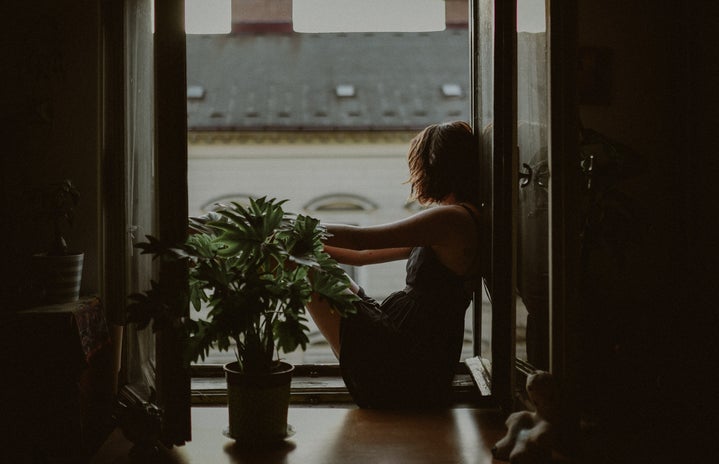As the days are getting shorter, the nights longer and the weather colder you’ll often find yourself naturally feeling a bit down. After the clocks go back and the highs of Halloween are over, November can certainly feel like an intermediate and stressful time – not to mention the looming autumn term deadlines. Many of us will be excited for the Christmas music blaring in the supermarket aisles and the cosy nights in from the bitter cold outside… However, the transition into autumn and winter can be particularly hard for many people, and you can find yourself feeling down in a way that can start to affect your quality of life through the winter months.
What is seasonal affective disorder?
SAD or the ‘winter depression’ is a form of depression which tends to be more severe depending on the seasons, particularly winter. S.A.D affects up to 3 in 100 people in the UK at some point in their life, and first symptoms are most common in young adults of the ages of 20 to 30, however it can affect all walks of life, old and young. Women are four times more likely to have SAD than men, and you shouldn’t never feel afraid to talk to a GP if you feel you are experiencing symptoms, especially if it is affecting your day-to-day life. The symptoms are very similar and associated to that of general depression, including a persistent low mood, loss of pleasure or interest in normal activities, feelings of despair and irritability.
However, other than getting that extra hour in bed, the clocks going back and the gloomy weather can not only make you feel mentally down, but it can also have physical implications on your body. Research suggests that SAD may be induced by the lack of sunlight in winter which stops the hypothalamus working properly. This can in turn lead to a high production of melatonin (which makes you sleepy) and a lack of production of serotonin (which stabilises your mood and makes you feel happy!). Serotonin also contributes to appetite, therefore physical symptoms may also include having sleep more or less, difficulty waking up in the morning and feeling more hungry.
Stigma and misconceptions
There are many other indications of SAD, as every individual is different, and copes differently. It is very common for many of us to get the ‘winter blues’ and feel a little lethargic and down – especially in January and February just after Christmas; but when it starts to affect your ability to enjoy life, personal relationships, education or work, it can be a very real mental battle.
Many people begin to experience SAD and shrug it off. There is a misconception that you can just ‘snap out of it’ or that ‘everyone experiences sadness occasionally’, but the truth is that it can be debilitating for some, and very much associates similar symptoms to Major Depressive Disorder. If someone around you seems to be struggling, don’t assume they are ‘being lazy’, there could quite possibly be more going on behind the scenes.
Treatment
There is no right or wrong way to care for SAD, as what works for some may not work for others, especially as this very real form of depression fluctuates in severity. There are a range of treatments that are available, and you don’t necessarily need to be diagnosed with SAD to use them.
A factor which may contribute to SAD is the disruption of your circadian rhythm or biological clock due to the reduction of sunlight beginning in the autumn months. Light therapy, or phototherapy can aid seasonal affective disorder by using a light box which mimics outdoor sunlight. Other treatments can include lifestyle measures, such as getting out more and exercising to manage stress levels. However, self-help is easier said than done, and some may need a bit of extra help – talking therapy or cognitive behavioural therapy are both a viable options too. Ultimately, treatments can be used together or separately, and no one treatment is better than another – but even just identifying, accepting, and starting the conversation on SAD is a great first step.
It may be particularly hard for students to be away from home, and it can get really lonely and stressful in the winter months. When suffering with SAD or any winter blues, university and fast approaching deadlines can be the last thing on your mind. Look out for each other, and most importantly don’t forget to look out for yourself.
As a disclaimer, I am not a trained doctor or mental health professional. I intend to raise SAD awareness and contribute advice and guidance as provided from personal experience. All technical information has been obtained via the website links below. Content discussed should not be taken as professional medical instruction or substituted for any healthcare advice given by a qualified specialist!
Help and support services:
NHS – https://www.nhs.uk/mental-health/conditions/seasonal-affective-disorder-sad/overview/
UoN – https://www.nottingham.ac.uk/currentstudents/healthyu/mental-health/bodymind.aspx
Samaritans
Provides confidential support for those struggling to cope
Telephone: 116 123 (24 hours a day)
Website: https://www.samaritans.org/
Mind
Provides information and signposting about mental health
Telephone: 0300 123 3393 (9am to 6pm, Mon to Fri)
Website: https://www.mind.org.uk/information-support/helplines
Rethink Mental Illness
Provides information on living with mental illness
Telephone: 0300 5000 927 (9:30am to 4pm, Mon to Fri)Website: https://www.rethink.org/aboutus/what-we-do/advice-and-information-service/


